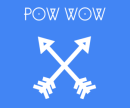
When Bob Sherriff pitched his mobile app to a crowded room at Capital Factory during Austin Startup Week in October, the audience’s reception was lukewarm.
So was the general public’s. Sherriff expected
Events to be popular among post-college young professionals like himself, who often struggle to make and maintain friendships without the social entropy of a college campus.But his hypothesis hadn’t held. For some reason, it wasn’t catching on for organizing impromptu gatherings for disc golf in the park or board games at a bar.
But then something unexpected happened. When Sherriff’s cousin showed the app to a few friends at Babson College in Massachusetts, it took off. Sherriff and his cofounder, Will Parks, who goes by the nickname Neighbors, quickly realized yuppies lacked a trait that’s hardcoded into college students: spontaneous play with strangers.
So Sherriff and Neighbors quickly got to work on a new approach.
A new strategy
First, Neighbors stripped Pow Wow down from a full iOS program to a hybrid app, dumping its guts and using the skeleton to house a mobile website he could update quickly without pushing new versions to the Apple’s app store, whose review process often delays new releases.
With the product ready for faster iteration cycles, Sherriff took aim at a new test market in his own backyard: St. Edward’s University.
According to Sherriff, the campus is the perfect place for promoting an app built around planning and publicizing social events. The 5,000 students there trend toward tech savvy, and for several reasons, they needed a faster, better, leaner way to promote events.
One reason is they need administrative approval before they can even post a flier in common areas. And with Facebook’s forum limited to the social circles of its users and Meetup events mostly only visible to a group’s members, Pow Wow seemed like just the thing.
Sherriff decided to create an unpaid internship for St. Edward’s students in hopes of building a sort of promotional street team that could also help with market research. In December, he began reaching out to students on campus through personalized messages on Facebook and email, suggesting they apply for the internship, hoping for a handful who might be interested in learning about the process of marketing new software.
The response was overwhelming. Of roughly 330 applicants, Sherriff said he personally interviewed at least 200 over the course of a month.
They wanted 50 interns, but quickly realized there was no way to manage that many people on their own. So they worked together to narrow it down to 15, loaded the app on to their phones, and sent them out on campus to field test it with their friends.
A new wrinkle
Feedback came fast. Sherriff summed up the early rounds in an email: “[It was] deemed a disaster.”
“They loved the concept,” he said. “But how simple we had it, and the color scheme, it was just really boring to them. Neighbors even built a thing online that allowed them to test colors and icon sets for the app. They submitted their designs and we picked the best one.”
But there were problems deeper than UI.
One issue was the hybrid app approach Neighbors favored for lean iterations. The tradeoff was that it ran much slower, a frustration compounded by lousy cell reception on St. Edward’s campus. And because the app was still so young, there weren’t many events on the service yet.
All that made the interns’ product demos problematic.
Neighbors found himself back at the drawing board without a lot of time to adapt the app to suit a new scenario. This time, he built it back up as a fully native iOS app, incorporating the latest tweaks and hoping the update would clear Apple’s checks quickly.
It did. While the Pow Wow interns posted one to two new events per week, other students began flocking to the service.
As of a week and a half ago, Pow Wow hit nearly 1,000 weekly active users, or about 20 percent of the St. Edward’s campus.
Looking ahead
As Pow Wow’s popularity grows, Sherriff has realized its appeal is even simpler than he originally thought.
“It’s just a really effective online digital bulletin board for them,” he said. “I built this for really small activities, like spontaneous games. But what I’m realizing is it’s really just a better events app.”
Neighbors and Sherriff may be under more pressure now than they were when their app was failing. The planners and promoters behind the larger events on campus have been reaching out directly for greater visibility.
Meanwhile, the founders are hustling to roll out a payments feature that would allow event hosts to charge admission.
And because the app serves the college crowd, the founders already have a canned response to safety concerns. Sherriff knows what you’re thinking before you finish the question.
“What happens if there’s a giant drunken orgy on there,” he said with a laugh. “Yeah. The fact is, we’re on the app most of the day [monitoring it for offensive content]. Unless of course that event happens to be incredibly appealing to a large group of people. In which case, hey. It’s their app, you know?”
Kidding aside, Sherriff said the app isn’t designed for anonymity, so bad actors wouldn’t be protected.
“It requires a Facebook login, so we know who you are,” he said. “There’s a good chance a majority of campus knows you, too. It’s early days, but we haven’t seen anything [problematic] like that.”
But for startups, “early” is a fluid concept. It may not be long before Pow Wow finds itself dominating campus event promotion. If that happens, Sherriff, Neighbors and their team will have to keep iterating quickly.
Have a tip for us or know of a company that deserves coverage? Email us a tip.




